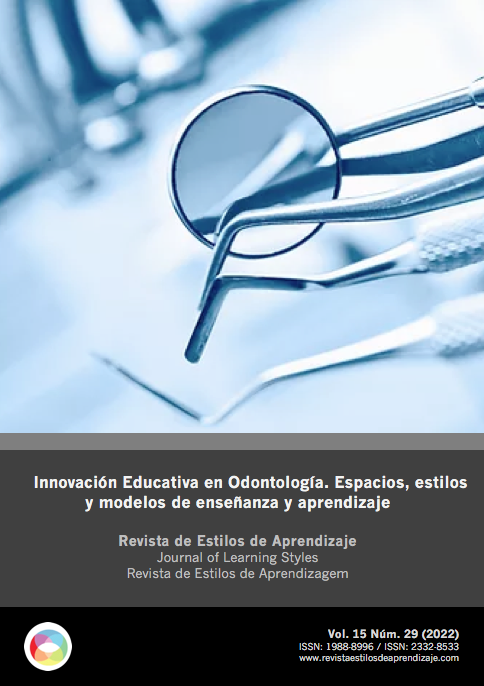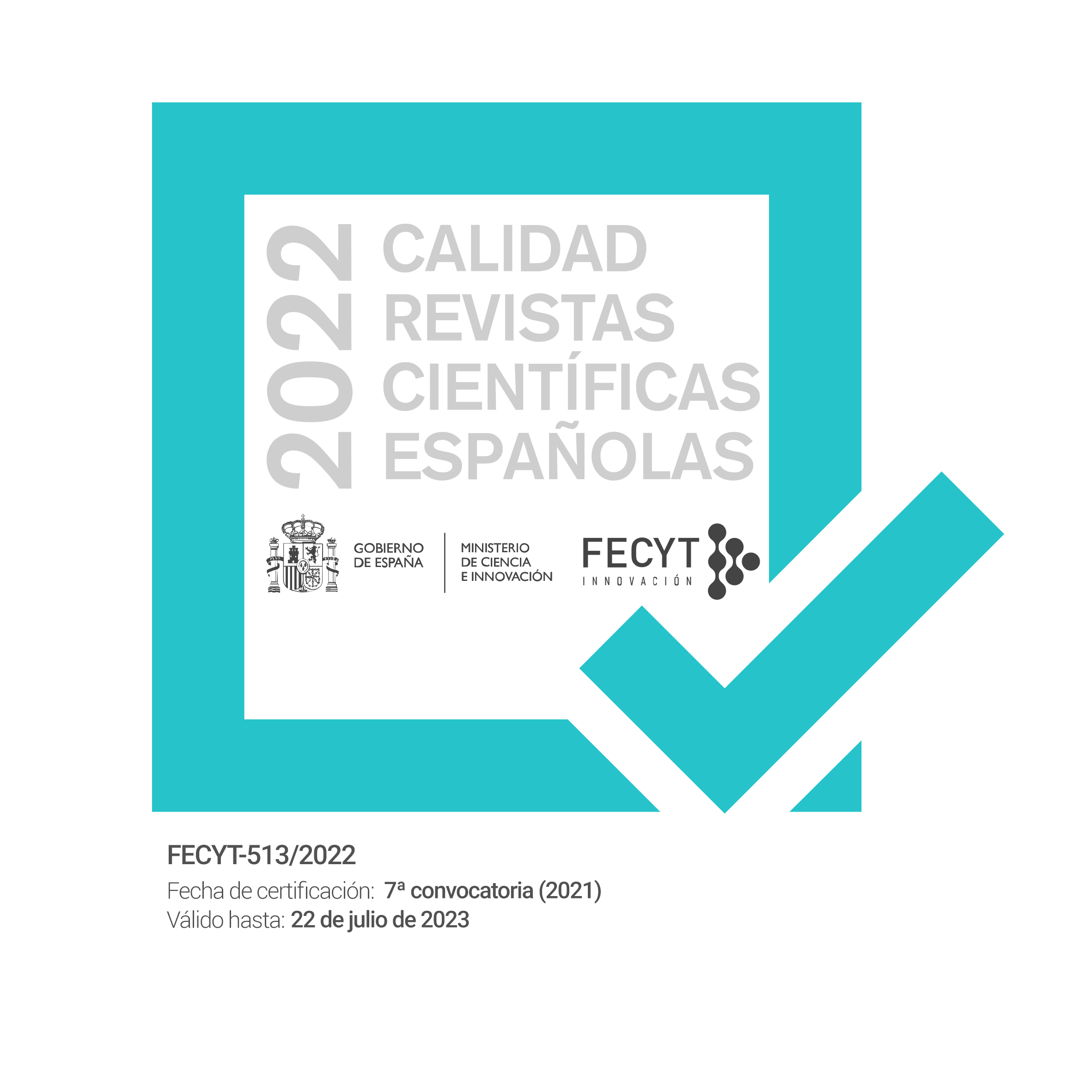Educational Innovation in Dentistry. Spaces, styles and models of teaching and learning.
DOI:
https://doi.org/10.55777/rea.v15i29.4226Keywords:
Dental education, Educational innovation, Dental technology, Professional competencies, e-learningAbstract
Durante la pandemia del Covid-19, a raíz del distanciamiento social, se han tenido que cambiar los espacios tradicionales de aprendizaje, como son las aulas, clases y laboratorios, por los espacios virtuales que permiten la no presencia física. Todo ello ha acelerado la docencia online en las diferentes áreas del conocimiento y por lo tanto, también en odontología. Gracias a los diferentes dispositivos electrónicos y al acceso a internet, se han desarrollado espacios interactivos multimedia que han permitido una mayor flexibilidad y accesibilidad en el aprendizaje. Pero, este modelo de aprendizaje online no está exento de problemas. Cabe destacar, principalmente, el inconveniente de garantizar la motivación de los estudiantes, así como la ausencia de prácticas clínicas con pacientes
Downloads
References
Alhajj, M. N., Khader, Y., Murad, A. H., Celebic, A., Halboub, E., Márquez, J. R., Macizo, C. C., Khan, S., Basnet, B. B., Makzoumé, J. E., de Sousa-Neto, M. D., Camargo, R., Prasad, D. A., Faheemuddin, M., Mir, S., Elkholy, S., Abdullah, A. G., Ibrahim, A. A., Al-Anesi, M. S., & Al-Basmi, A. A. (2018). Perceived sources of stress amongst dental students: A multicountry study. European Journal of Dental Education, 22(4), 258–271. https://doi.org/10.1111/eje.12350
Alzahem, A. M., Van der Molen, H. T., Alaujan, A. H., & De Boer, B. J. (2014). Stress management in dental students: A systematic review. Advances in Medical Education and Practice, 5, 167–176. https://doi.org/10.2147/AMEP.S46211
Braga, T., Robb, N., Love, R. M., Amaral, R. R., Rodrigues, V. P., de Camargo, J. M. P., & Duarte, M. A. H. (2021). The impact of the use of magnifying dental loupes on the performance of undergraduate dental students undertaking simulated dental procedures. Journal of Dental Education, 85(3), 418–426. https://doi.org/10.1002/jdd.12437
Brown, M. G., Qualtrough, A. J. E., & McLean, W. (2020). Magnification in undergraduate endodontic teaching in the UK and Ireland: a survey of teaching leads in Endodontology. International Endodontic Journal, 53(4), 553–561. https://doi.org/10.1111/iej.13240
Elani, H. W., Allison, P. J., Kumar, R. A., Mancini, L., Lambrou, A., & Bedos, C. (2014). A Systematic Review of Stress in Dental Students. Journal of Dental Education, 78(2), 226–242. https://doi.org/10.1002/j.0022-0337.2014.78.2.tb05673.x
Gambarini, G., Galli, M., Stefanelli, L. V., Di Nardo, D., Morese, A., Seracchiani, M., De Angelis, F., Di Carlo, S., & Testarelli, L. (2019). Endodontic Microsurgery Using Dynamic Navigation System: A Case Report. Journal of Endodontics, 45(11), 1397-1402.e6. https://doi.org/10.1016/j.joen.2019.07.010
Jain, S. D., Carrico, C. K., & Bermanis, I. (2020). 3-Dimensional Accuracy of Dynamic Navigation Technology in Locating Calcified Canals. Journal of Endodontics, 46(6), 839–845. https://doi.org/10.1016/j.joen.2020.03.014
Kröger, E., Dekiff, M., & Dirksen, D. (2017). 3D printed simulation models based on real patient situations for hands-on practice. European Journal of Dental Education, 21(4), e119–e125. https://doi.org/10.1111/eje.12229
Stokes, K., Thieme, R., Jennings, E., & Sholapurkar, A. (2021). Cone beam computed tomography in dentistry: practitioner awareness and attitudes. A scoping review. Australian Dental Journal, 66(3), 234–245. https://doi.org/10.1111/adj.12829
Wang, K., Zhang, L., & Ye, L. (2021). A nationwide survey of online teaching strategies in dental education in China. Journal of Dental Education, 85(2), 128–134. https://doi.org/10.1002/jdd.12413
Zhan, Y., Wang, M., Cheng, X., Li, Y., Shi, X., & Liu, F. (2021). Evaluation of a dynamic navigation system for training students in dental implant placement. Journal of Dental Education, 85(2), 120–127. https://doi.org/10.1002/jdd.12399

Downloads
Published
How to Cite
Issue
Section
License
By submitting the original, the author(s) declare that they are aware of and accept, in full, the privacy policy as well as the copyright of the Learning Styles Magazine.
The Learning Styles Magazine offers free and open access to its content, completely free of charge, in order to bring scientific research to its readers and society in general. All digital contents are free and open access and are published under a Creative Commons license:

Rights are granted under the Creative Commons Reconocimiento-NoComercial-SinObraDerivada 4.0 Internacional (CC-BY-NC-ND 4.0)
The Learning Styles Magazine is an open access journal. Publication of articles or reviews in the Journal does not entitle you to any remuneration. For authors as well as readers, the journal is free Creative Commons Reconocimiento-NoComercial-SinObraDerivada 4.0 Internacional (CC-BY-NC-ND 4.0).
With this licence, the reproduction and dissemination of the contents of the magazine for educational, social and knowledge transmission purposes is permitted, without any profit motive in mind, provided that the source and authorship are not modified. The licence granted to Learning Styles Magazine allows the copying and distribution of the magazine's contents, as long as the authorship of the work is recognised, correctly specifying the author and the publishing entity. The work may not be used for commercial purposes, nor may it be altered, transformed or generated from this work.
The publication of articles or reviews in the Journal does not give the right to any remuneration.
The Learning Styles Journal invites the author/authors to increase the visibility and scope of their articles published by re-disseminating them in:
- Web spaces and personal networks, as well as in scientific meetings and forums
- Open institutional archives in Universities, educational repositories and Research Centres.
- Academic and scientific networks (Researchgate, Academia.edu, Plubons, etc.)
All these spaces and publications must include all the bibliographic data of the publication.
























